BOOKWORM
Published in Book Reviews, Book Reviews, Issue 2 (March/April 2021), Reviews, Volume 29By Joe Culley
@TheRealCulls
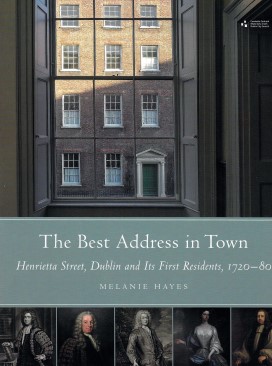 A crowded drawing-room. A signet ring raps against a wine goblet. ‘Gentlemen,’ the host announces, ‘may I introduce you to our new neighbour from No. 9.’ The Rt Hon. Thomas Carter steps forward:
A crowded drawing-room. A signet ring raps against a wine goblet. ‘Gentlemen,’ the host announces, ‘may I introduce you to our new neighbour from No. 9.’ The Rt Hon. Thomas Carter steps forward:
‘“An able and intriguing man, of slender reputation for integrity”, Thomas Carter was one of Henrietta Street’s earliest and longest-standing residents. Known for his tricky personality and propensity for making enemies, not least among his neighbours, Carter was a shrewd and self-interested operator who carefully cultivated a range of powerful connections on both sides of the Irish Sea to further his political ambitions and advance his social standing among Ireland’s governing elites.’
He earned the epithet ‘Vicious Carter’.
And thus we meet one of the characters in Melanie Hayes’s superb The best address in town: Henrietta Street, Dublin, and its first residents, 1720–80, a thoroughly entertaining romp among the personalities and lives of Ireland’s political élite in the mid-eighteenth century.
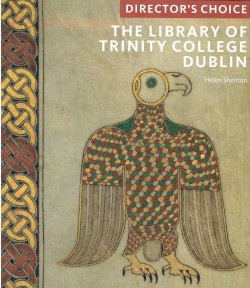 Most of what we usually read about the street focuses either on the architecture or, more recently, on the fine Tenement Museum at No 14. But while Hayes does examine the architecture closely—indeed, breaks new ground in the specifics of who built what—the real pleasure here is the social history.
Most of what we usually read about the street focuses either on the architecture or, more recently, on the fine Tenement Museum at No 14. But while Hayes does examine the architecture closely—indeed, breaks new ground in the specifics of who built what—the real pleasure here is the social history.
Of course, the man behind this ambitious scheme was Luke Gardiner. Though from relatively humble origins, his intelligence, business acumen and innate political skills saw him accrue immense wealth and influence. The success of the Henrietta Street scheme allowed him to turn his sights farther east, including what would be Sackville Street, Mountjoy Square and his eponymous thoroughfare.
Gardiner’s first and most important success was in persuading the newly appointed archbishop of Armagh and primate of Ireland (Established), Dr Hugh Boulter, to purchase a large site on the street, which was only beginning to be laid out. (Indeed, the street would become more commonly known as Primates Hill.) Naturally, the great and those with ambitions to be great quickly queued to have—and to be seen to have—their own stately edifice next door. Among them were Henry ‘Speaker’ Boyle, the ‘King of the Irish Commons’; Sir Gustavus Hume; and Sir Robert King, Baron Kingsborough, a ‘vile young rake’ and ‘notorious womaniser’, who died at the age of 31, leaving behind ruined reputations, illegitimate children and massive debts. Many were founder members of the Dublin Society.
One of the most intriguing episodes in the life of the street came in the mid-1750s during the ‘Money Bill Dispute’, which centred on whether Ireland could retain its excess revenue or must send it on to the London exchequer. The neighbours split badly over the issue, and many a libellous toast was raised from one side of the street to the other.
This handsome, heavily illustrated volume will remain as a reference work in my home. And you could get a terrific BBC drama series out of it.
Helen Shenton, who has been archivist at Trinity College, Dublin, since 2014, has compiled an attractive little selection of highlights from the college library’s diverse holdings, from manuscripts and maps to postcards from Beckett. It’s the sort of booklet you’d get in the gift shop, about A5 size, and would rest nicely on the side table beside that nice lamp your grandmother gave you.
Among those of Shenton’s choices that stand out are John Banville’s handwritten drafts for The Blue Guitar. The extraordinary calligraphy on display, produced by a fountain pen and a sporadically cursive italic, suggests that, in the creative process, Banville is as focused on shaping his words as on shaping his sentences.
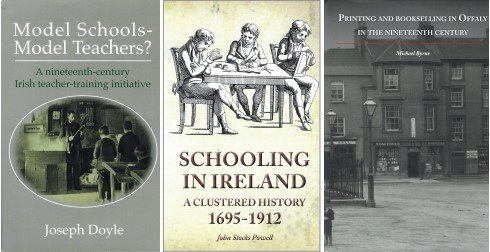
After a full career as a teacher and a personal dedication to further education, Joseph Doyle has turned his doctoral thesis into Model schools—model teachers? A nineteenth-century Irish teacher-training initiative. To describe it as ‘self-published’ would be a disservice, for it would stand happily beside any output from a professional academic publisher in terms not only of the quality of its design and production but also of its intellectual rigour.
‘In the field of Irish education during the nineteenth century,’ Doyle writes, ‘the most significant government initiative was the establishment of a system of national education, which succeeded in providing regulated elementary education for the masses.’ But the government also wanted that education to have a specific effect: to convince those masses to accept the status quo. Thus the government would need teachers trained specifically to proselytise, but its attempt to establish a network of training schools to produce such teachers was less than a success. Of course, one of the main obstacles—never overcome—was intense resistance from the Catholic Church.
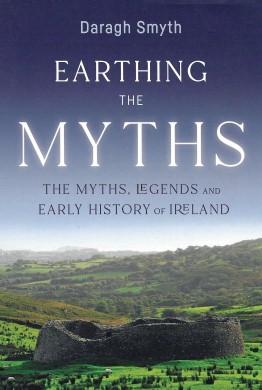 Doyle’s prose is clear and unencumbered by academic jargon, and his study will appeal to many.
Doyle’s prose is clear and unencumbered by academic jargon, and his study will appeal to many.
Staying on the theme, John Stocks Powell’s Schooling in Ireland: a clustered history 1695–1912 examines why Portarlington, of all places, should have developed as a hotbed of excellent education. One of the main forces at play, it seems, was the arrival of a large Huguenot contingent, who retained an emphasis on French and classical studies. This created a sort of ‘local industry’ in élite schooling.
The latest from the indefatigable Michael Byrne of Tullamore is Printing and bookselling in Offaly in the nineteenth century, in which he argues that the energy of scientific inquiry led by the earls of Rosse made the town of Birr a centre of learning and literacy with a concomitant printing industry. The town featured several reading rooms and ‘circulating libraries’, which often served as clubs. In contrast, the Charleville family were absentee landlords of Tullamore and no such culture of self-improvement developed there.
Space does not permit a proper investigation of Earthing the myths: the myths, legends and early history of Ireland from retired lecturer Daragh Smyth. Covering the period from 800 BC to AD 650, he chronicles over 1,000 sites and explores the ways in which the land evolved, and with it our catalogue of myths and legends. It’s a relaxed, comfortable read.
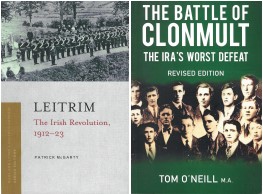 Patrick McGarty has developed his doctoral dissertation into Leitrim: the Irish revolution, 1912–23 for the fine series by Four Courts Press. It includes, of course, the scandalous death of a Mohill doctor, which was the subject of the excellent The murder of Dr Muldoon, a true story: a suspect priest, a widow’s fight for justice, which I mentioned in HI 27.6 (Nov./Dec. 2019).
Patrick McGarty has developed his doctoral dissertation into Leitrim: the Irish revolution, 1912–23 for the fine series by Four Courts Press. It includes, of course, the scandalous death of a Mohill doctor, which was the subject of the excellent The murder of Dr Muldoon, a true story: a suspect priest, a widow’s fight for justice, which I mentioned in HI 27.6 (Nov./Dec. 2019).
February 2021 saw the centenary of an ambush in which twelve IRA Volunteers were killed. Tom O’Neill has produced an updated edition of his 2006 The battle of Clonmult: the IRA’s worst defeat.
Melanie Hayes, The best address in town: Henrietta Street, Dublin, and its first residents, 1720–80 (Four Courts Press, €30 hb, 312pp, ISBN 9781846828478).
Helen Shenton, The library of Trinity College Dublin: director’s choice (Scala Arts and Heritage, £9.95 pb, 80pp, ISBN 9781785512421).
Joseph Doyle, Model schools—model teachers? A nineteenth-century Irish teacher-training initiative (Geate Buidhe Books, €40 hb, 375pp, ISBN 9781527259614).
John Stocks Powell, Schooling in Ireland: a clustered history 1695–1912 (Offaly Historical and Archaeological Society, €20 pb, 292pp, ISBN 9781909822252).
Daragh Smyth, Earthing the myths: the myths, legends and early history of Ireland (Irish Academic Press, €29.95 hb, 386pp, ISBN 9781788551359).
Michael Byrne, Printing and bookselling in Offaly in the nineteenth century (Offaly Historical and Archaeological Society, €25 hb, 78pp, ISBN 9781909822238).
Patrick McGarty, Leitrim: the Irish revolution, 1912–23 (Four Courts Press, €22.45 pb, 202pp, ISBN 9781846828508).
Tom O’Neill, The battle of Clonmult: the IRA’s worst defeat (The History Press, £14.99 pb, 160pp, ISBN 9780750992213).
















